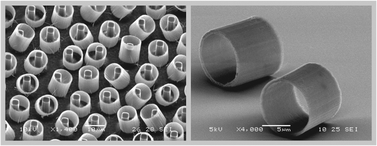Fabrication of integrated porous glass for microfluidic applications†
Abstract
This paper presents a method for the fabrication of integrated porous

* Corresponding authors
a
Mesoscale Chemical Systems, MESA+ Institute for Nanotechnology, University of Twente, PO Box 217, 7500AE Enschede, The Netherlands
E-mail:
s.sukas@utwente.nl
Fax: +31 (0)53 4893595
Tel: +31 (0)53 4892604
b Department of Chemical Engineering, Vrije Universiteit Brussels, Pleinlaan 2, 1050 Brussels, Belgium
This paper presents a method for the fabrication of integrated porous

 Please wait while we load your content...
Something went wrong. Try again?
Please wait while we load your content...
Something went wrong. Try again?
S. Sukas, R. M. Tiggelaar, G. Desmet and H. J. G. E. Gardeniers, Lab Chip, 2013, 13, 3061 DOI: 10.1039/C3LC41311J
To request permission to reproduce material from this article, please go to the Copyright Clearance Center request page.
If you are an author contributing to an RSC publication, you do not need to request permission provided correct acknowledgement is given.
If you are the author of this article, you do not need to request permission to reproduce figures and diagrams provided correct acknowledgement is given. If you want to reproduce the whole article in a third-party publication (excluding your thesis/dissertation for which permission is not required) please go to the Copyright Clearance Center request page.
Read more about how to correctly acknowledge RSC content.
 Fetching data from CrossRef.
Fetching data from CrossRef.
This may take some time to load.
Loading related content
